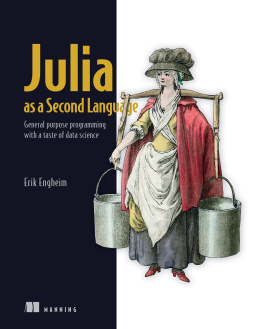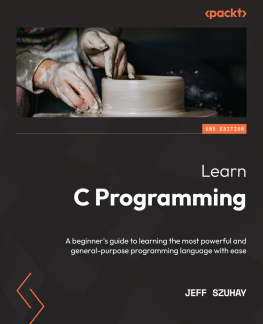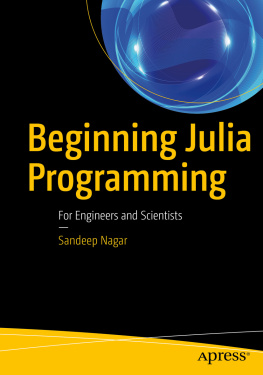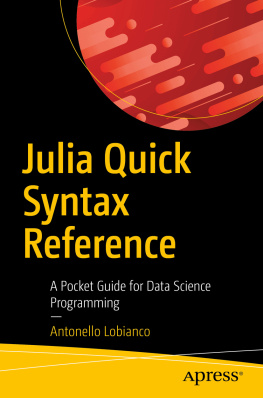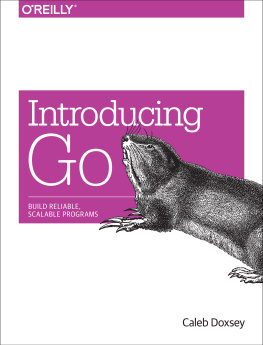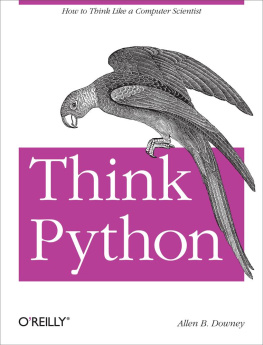Lauwens Ben - Think Julia: how to think like a computer scientist
Here you can read online Lauwens Ben - Think Julia: how to think like a computer scientist full text of the book (entire story) in english for free. Download pdf and epub, get meaning, cover and reviews about this ebook. City: Beijing;Boston;Farnham;Sebastopol;Tokyo, year: 2019, publisher: OReilly Media, Inc, genre: Home and family. Description of the work, (preface) as well as reviews are available. Best literature library LitArk.com created for fans of good reading and offers a wide selection of genres:
Romance novel
Science fiction
Adventure
Detective
Science
History
Home and family
Prose
Art
Politics
Computer
Non-fiction
Religion
Business
Children
Humor
Choose a favorite category and find really read worthwhile books. Enjoy immersion in the world of imagination, feel the emotions of the characters or learn something new for yourself, make an fascinating discovery.
- Book:Think Julia: how to think like a computer scientist
- Author:
- Publisher:OReilly Media, Inc
- Genre:
- Year:2019
- City:Beijing;Boston;Farnham;Sebastopol;Tokyo
- Rating:4 / 5
- Favourites:Add to favourites
- Your mark:
Think Julia: how to think like a computer scientist: summary, description and annotation
We offer to read an annotation, description, summary or preface (depends on what the author of the book "Think Julia: how to think like a computer scientist" wrote himself). If you haven't found the necessary information about the book — write in the comments, we will try to find it.
Designed from the beginning for high performance, Julia is a general-purpose language ideal for not only numerical analysis and computational science but also web programming and scripting. Through exercises in each chapter, youll try out programming concepts as you learn them. Think Julia is perfect for students at the high school or college level as well as self-learners and professionals who need to learn programming basics.
Start with the basics, including language syntax and semantics
Get a clear definition of each programming concept
Learn about values, variables, statements, functions, and data structures in a logical progression
Discover how to work with files and databases
Understand types, methods, and multiple dispatch
Use debugging techniques to fix syntax, runtime, and semantic errors
Explore interface design and data structures through case studies
Lauwens Ben: author's other books
Who wrote Think Julia: how to think like a computer scientist? Find out the surname, the name of the author of the book and a list of all author's works by series.


